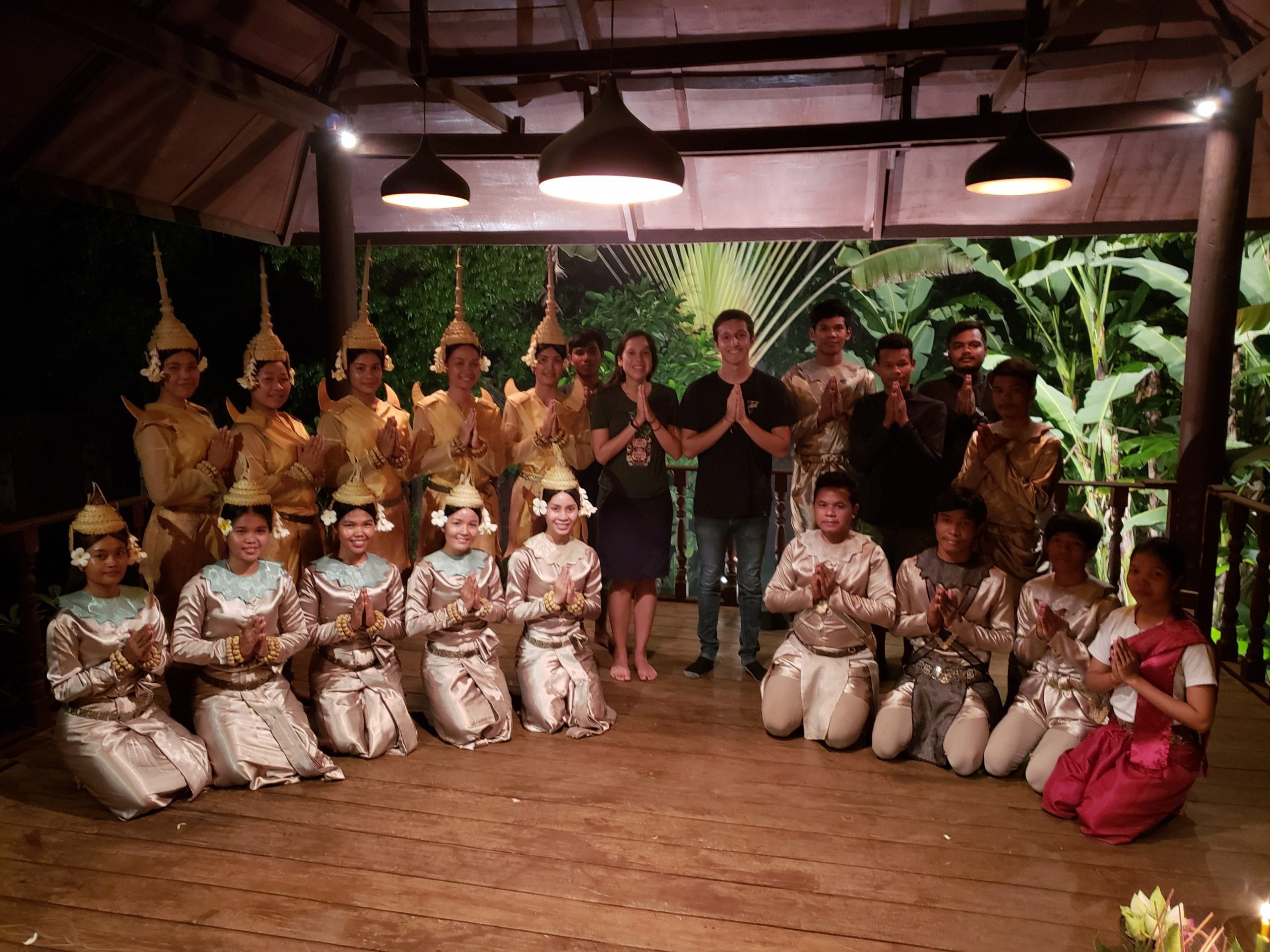Global Service Scholar: Jake Ortiz
Country: Cambodia
My biggest takeaway from my experience is the firsthand education I received on Cambodian culture and history. Before traveling there I had attended a talk about Khmer experience in California, as well as taken a course, Religion in Southeast Asia, to gain some understanding about the people in Cambodia. Once I landed, however, my experience was quite different. No lecture, no coursework, and certainly no blog post, can tell you about all of the beauty of Cambodia’s culture.
One example of their incredible culture is that they are primarily Buddhist, though their practices incorporate Hindu beliefs as well. During a trip to Phnom Kulen, one of the Treak teachers, Dara, showed me how to pray at the Buddhist shrine. This shrine was across from an ancient Linga Stone, a fountain used by ancient Khmer kings to gain the power of Shiva, a Hindu deity. “Nowadays,” Dara tells me, “people just wash with the water for good luck.” In addition to praying at the Buddhist shrine, we also washed at the Linga Stone. Later on, another teacher that we worked with mentioned that they are accepting of all religions in Cambodia. Of course, I did not spend enough time to truly understand the extent of their religious freedoms, though if they truly are as accepting as the teachers claim, then the rest of the world should live by their example.
The photo attached to this post shows Michelle and I attending a traditional Cambodian Apsara dance. These dancers have trained for many years and have even traveled to Japan and the United States to showcase their dance. Dara mentioned to me that the their form of dance originated from the ancient stories involving Hindu deities, which are recorded through the stone art at the Angkor temples. The photo includes a number of dancers as well as four musicians (the woman on the bottom right and the three men in black, one behind Michelle and two to my left), who sang and played instruments to accompany the dance. The beauty of this dance is not confined to the performance alone, but also extends to the organization that trains these dancers. Rather than beginning this group to teach dancers and earn money from tourists, the objective is to train dancers to preserve and carry on the tradition of Apsara dancing over the years. Cambodia is often considered a “developing” country, though many should remember that their nation’s traditions go back over a thousand years.
Now that I have returned to the United States, I plan to enjoy Khmer culture whenever I have the chance to. Many Khmer have settled in Long Beach over the years, largely due to the Khmer Rouge regime in Cambodia’s recent history. As a result, Long Beach is home to the largest population of Khmer people outside of Cambodia. I am not naive in believing that I can change the world, though I know that the very least I can do is support and encourage people to preserve and share their culture. I am fortunate to have experienced this firsthand in Cambodia.

